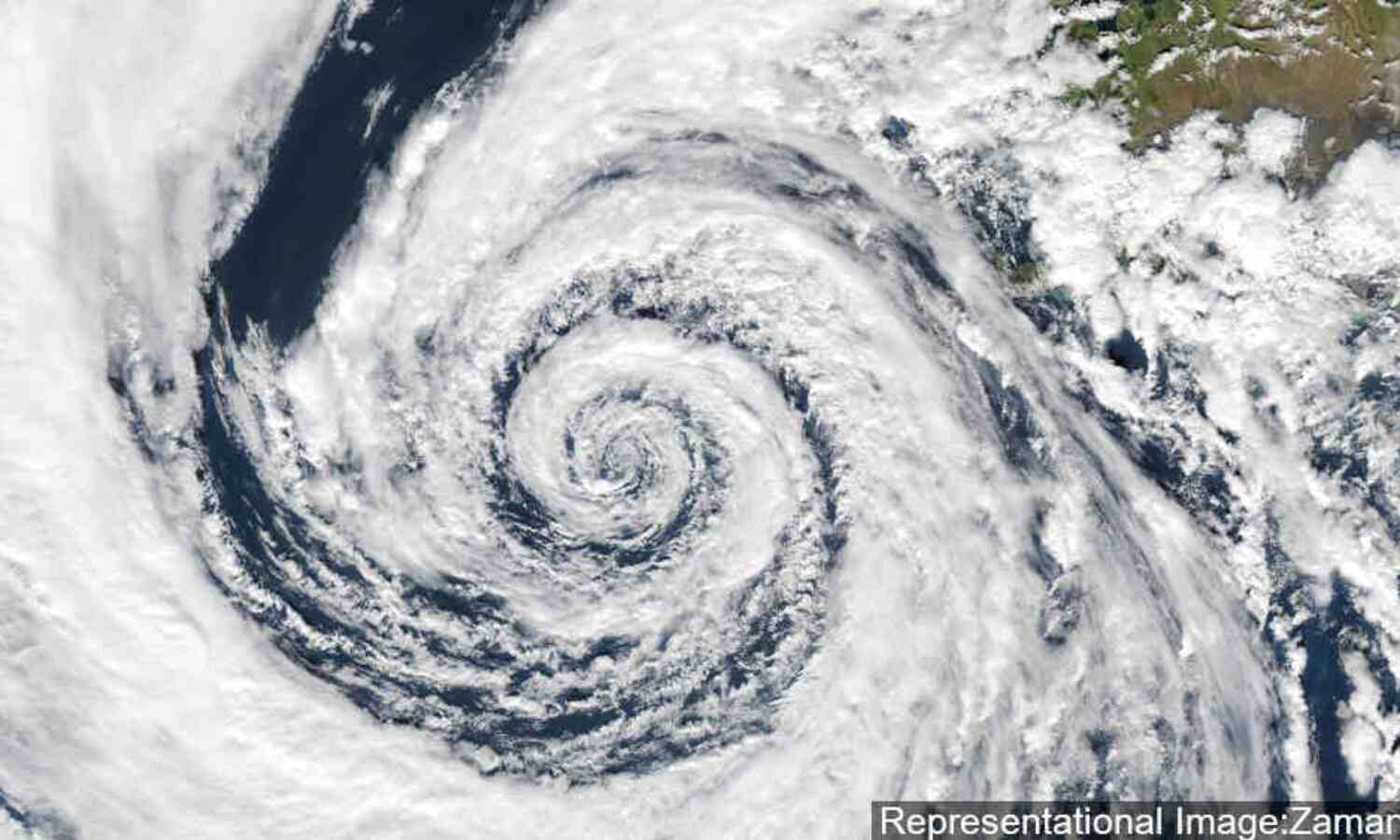Amphan: ‘Higher Ocean Surface Temperatures Making Cyclones More Powerful’
New Delhi: Governments in the Indian states of Odisha and West Bengal are preparing to evacuate more than a million people as Super Cyclone Amphan, strongest cyclone ever to hit the Bay of Bengal, nears its landfall.
Brushing along the coastal districts of Odisha, the super cyclone will make landfall between Digha in West Bengal and Hatiya Islands in Bangladesh--close to the Sundarbans--during the first half of May 20, 2020, according to the India Meteorological Department (IMD). It will attain a maximum sustained wind speed of 155-165 km per hour (kmph), gusting to 185 kmph.
Cyclone Amphan will be the first super-cyclonic storm to hit the region in 20 years, and the strongest ever. In 1999, a super-cyclone had killed more than 9,000 people along the coast of Odisha. Climate change, due to the rise in ocean surface temperature, is making cyclones across the world more frequent and powerful, as we explain later.
The poor are the most vulnerable to the probable damages of the cyclone, S.N. Pradhan, director-general, Indian National Disaster Response Force (NDRF), said in a press conference on May 18. It presents a “dual challenge” alongside COVID-19, because social distancing complicates evacuation arrangements, he added.
India has 101,139 confirmed COVID-19 cases, as on May 19, 2020, HealthCheck.in’s Coronavirus Monitor shows.
Unprecedented surface temperatures
“Cyclone Amphan intensified from a category-1 cyclone to category-5 cyclone in a short span of 18 hours, evolving into the strongest cyclone ever recorded in the Bay of Bengal,” said Roxy Mathew Koll, climate scientist at the Indian Institute of Tropical Meteorology, Pune.
The Bay of Bengal recorded surface temperatures of 32-34°C for the first two weeks of May 2020. These are record temperatures driven by climate change, Koll said, adding that tropical cyclones draw their energy from the ocean surface, and higher temperatures can supercharge a cyclone so that it intensifies rapidly.
Super Cyclone AMPHAN is likely to make landfall between Digha (West Bengal) and Hatiya Islands (Bangladesh) close to Sundarbans with maximum sustained wind 155-165 kmph gusting to 185 kmph during afternoon to evening of tomorrow, the 20th May.
— India Met. Dept. (@Indiametdept) May 19, 2020
1/3 pic.twitter.com/rVI1r7LG2X
Damage Expected:
— India Met. Dept. (@Indiametdept) May 19, 2020
Extensive damage to all types of kutcha houses, some damage to old badly managed Pucca structures.
Potential threat from flying objects.
Extensive uprooting of communication and power poles.
2/3
Disruption of rail/road link at several places.
— India Met. Dept. (@Indiametdept) May 19, 2020
Extensive damage to standing crops, plantations, orchards.
Blowing down of Palm and coconut trees.
Uprooting of large bushy trees.
Large boats and ships may get torn from their moorings.
3/3
Global warming is making cyclones more frequent and powerful
The strongest cyclones have become more common across the world. Scientists project that climate change and increasing surface temperatures will continue to make the strongest cyclones more powerful. The strength of cyclones affecting the countries bordering the North Indian Ocean has been increasing as the planet has warmed, multiple studies have shown.
"Global warming is leading to an increase in the heat content of the upper oceans around the globe. This is also true for the oceanic regions around the Indian region,” said V. Vinoj, assistant professor, School of Earth, Ocean and Climate Sciences at the Indian Institute of Technology, Bhubaneswar. This is one of the causes of the increasing number of cyclonic activities in our region during pre-monsoon times, he said.
The number of cyclones in the Arabian Sea and the Bay of Bengal has increased by 32% in the last five years, according to data from the IMD. Compared to previous decades, the last 10 years have also seen an 11% rise in these extreme occurrences, IndiaSpend reported on December 18, 2019.
For two consecutive years--2018 and 2019--India has recorded seven cyclones each. This is much higher than the annual long-period average (1961-2017) of 4.5. Before 2018, India had seen as many cyclones in a single year in 1985, IndiaSpend report said.
Six cyclones intensified into a severe cyclonic storm in both 2018 and 2019, which is the most since 1976, when seven such storms were recorded, The Weather Channel had reported on November 14, 2019.
Impact on Indian monsoon
A cyclone just before the onset of the monsoon can change the thermodynamic (temperature and humidity) characteristics of the area and affect the date of onset. There is not enough information yet to know how this one will behave, but the IMD says there is a possibility that the onset may be delayed, said Koll.
This year, the Indian summer monsoon is expected to hit Kerala on June 1, 2020, the IMD had announced on April 15, 2020, adding that the monsoon was expected to be normal.
Severe damage expected
Due to the severe wind speed, Cyclone Ampham has the potential to cause extensive damage. IMD has said that all types of kutcha houses could bear extensive damage, and old or badly managed pucca structures might also be badly affected. Extensive uprooting of communication and electricity poles is expected, and rail and road links at several places are likely to be affected.
The cyclone could cause extensive damage to standing crops, plantations and orchards. It will blow down palm and coconut trees, and flying objects would be a potential threat, IMD has warned.
East Medinipur, South 24 Parganas, North 24 Parganas, Howrah, Hoogli and Kolkata districts of West Bengal and Jagatsinghpur, Kendrapara, Bhadrak, Balasore, Jajpur and Mayurbhanj districts of Odisha are on high alert. People from the coastal areas of Odisha and low-lying areas of West Bengal are being evacuated.
Fisherpeople have been warned to not “venture into the South Bay of Bengal during the next 24 hours, and north Bay of Bengal from 18-20 May”.
(Tripathi is an IndiaSpend reporting fellow.)
We welcome feedback. Please write to respond@indiaspend.org. We reserve the right to edit responses for language and grammar.




